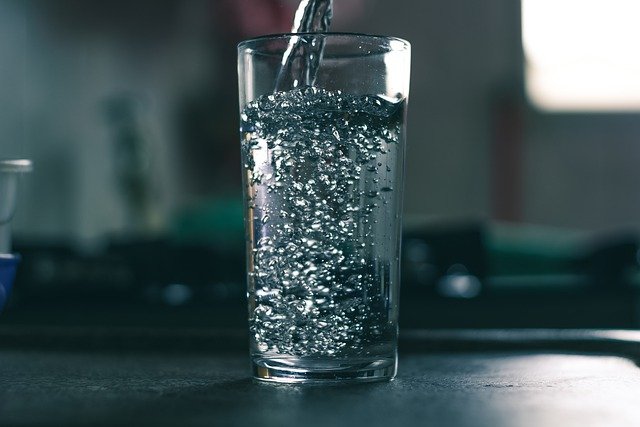6 Things You Should Consider Buying a Family Drinking Water Filter

Hi, I am Betty Knight, Owner of this site! I…
Access to clean water is a fundamental human right. But in today’s world, it has almost become a privilege. Fortunately, technology has blessed us with many in-home filtration systems that we can use to purify water flowing through our faucets, irrespective of its source.
Let’s make one thing clear: no water filter will remove everything from water. And that’s completely alright since some minerals, like fluoride, in water are beneficial for the body.
When choosing a family drinking water filter your aim should be to select one that removes the most contaminants.
So how do you choose this water filter? Let’s discuss the essentials you need to keep in mind when buying a drinking water filter for your family.
What To Consider When Buying A Drinking Water Filter?
Although all water filters primarily do the same thing – cleanse water – their idealness for your home will depend on several factors.
-
Removing Capacity
First and foremost, what does the water filter remove from drinking water? The easiest way to check this is to look for an NSF certification. If the filter is certified, you can go to the NSF database and determine what stuff that particular filter removes from water.
Alternatively, look at the labels when buying a system. Most labels display the contaminants a water filter can remove.
Before you make a decision, make sure to double-check the manufacturers’ claims with a third-party source.
Keep in mind that home water filters specifically remove what’s written on the label. Don’t assume if a filter removes germs; it will also filter chemicals.
In fact, you should also check if the water filter you’ve selected eliminates any important minerals, such as fluoride.
For example, ion exchange and reverse osmosis filters do remove fluoride from drinking water. If you have kids at home drinking water with less than <0.6ppm fluoride, they’ll need fluoride supplements.
-
Cost
Drinking water filters can range anywhere from $20 to a thousand dollars. Additionally, complex systems come with extra cost for installation and maintenance.
-
Power Supply
Some filtration systems, such as reverse osmosis and UV, require constant energy flow. So, if you live in an area that often gets power failures, you might want to look for an alternative option.
-
Daily Use
What is your family’s average daily water consumption? If it’s low, you can opt for a slow filtration system since its only job is to purify drinking water.
On the other hand, if your home has more occupants and higher consumption, you should select a water filter that purifies more per minute. You’ll find this information on the label or in the product description.
-
Type
Nowadays, homeowners have the freedom to choose among a number of drinking water filters. Do note not all of these have the same removing capacities, so don’t forget to read the labels.
Water Filter Pitchers
These are pitchers with built-in filter cartridges that cleanse water as it passes from the top to the bottom. You can simply pour water from the pitcher into a glass as you would with any regular pitcher.
Water filter pitchers are inexpensive, easy to use, and have no installation. But you need to replace the cartridges regularly, and the water flow is relatively slow.
They’re ideal for couples or people living alone.
Refrigerator Filters
Refrigerator filters are inside the refrigerator and remove impurities from the water flowing to the water dispenser. Some models also have ice makers in them. Along with improving the taste of water, they’re easy to use but require regular replacement.
Faucet-Mounted Water Filters
Faucet water filters get attached to a faucet in your kitchen. You can switch them on or off depending on the requirement for filtered or unfiltered water. They’re also an inexpensive option but do NOT work with non-standard faucets.
All in all, faucet-mounted water filters are ideal for small families or homes with low drinking water needs.
Faucet-Integrated Filters
These are faucets that readily come with built-in filters, equipped to remove water contaminants and improve water taste.
Although they’re a contemporary solution, they’re often expensive and require additional installation expense.
Under-Sink Water Filters
As the name says, these filters go under the sink, and a specialized faucet is installed on the top. The system is always under pressure, thus ensuring the flow of water when someone opens the faucet.
Under-sink water filters last for six to twelve months, depending on how often you use them. Plus, they have a high flow rate of roughly one gallon per minute when the PSI is at max.
You might need to modify the plumbing in your kitchen, though, to install this system. Also, under sink systems are more expensive than most other options.
If you’re planning to purchase an under sink water filter, you’ll find reliable options in this recently updated guide.
Countertop Filters
These systems have filter cartridges attached to a spout. You can fill your water bottles or other containers with the filtered water coming through that spout.
They also require installation and take up space on your countertop. But they’re suitable for smaller families since the flow rate is moderate.
Whole House Reverse Osmosis Filters
A reverse osmosis filter removes chlorine, salts, metals, and debris from water. The system contains a semipermeable membrane that only lets specific particles – including water – through.
Besides, there’re pre and post-filters before and after the RO membrane that remove additional impurities from the filtered water.
Whole house RO systems are beneficial for homeowners who want all water coming into the house – not only drinking water – to be purified. It’s just that they’re expensive, require professional installation, and demand high maintenance.
-
Treatment System
Apart from the type of water filter you choose for your family, you should also consider the primary filtration mechanism it uses. The common ones include activated carbon filtration, ion exchange, reverse osmosis purification, and distillation.
Activated Carbon
Activated carbon filters remove organic contaminants from water while improving its taste. Some models also remove pesticides, chlorination byproducts, and cleaning solutions.
However, these filters do not remove metals, bacteria, dissolved minerals, or nitrate.
Ion Exchange
Ion exchange water filters remove water-hardening minerals, fluoride, and radium from water.
You shouldn’t use them if there’s a high concentration of iron bacteria or sole mineral in your drinking water since it will clog the resin, rendering it useless for water softening.
Reverse Osmosis
A reverse osmosis water filter system removes organic and inorganic compounds, including nitrates and sodium.
Plus, they remove any nasty odor and taste in water. But there are some limitations to the kind of compounds they can effectively filter.
Distillation
Water distillation units remove organic compounds, nitrates, heavy metals, and bacteria from drinking water. But they are not effective against some pesticides and volatile organic compounds.
Make Your First Purchase With Confidence!
Now that you know what to look for in a family drinking water filtration system, you can confidently make your first purchase.
Don’t forget to check multiple options before settling on one because you’ll likely find different variations – in terms of the treatment system and removing capacity – of the same filter.
What's Your Reaction?
Hi, I am Betty Knight, Owner of this site! I am a 'nearing 30-year-old', happily married to 1 awesome man. We live in the beautiful tourist town of Franklin NY.



